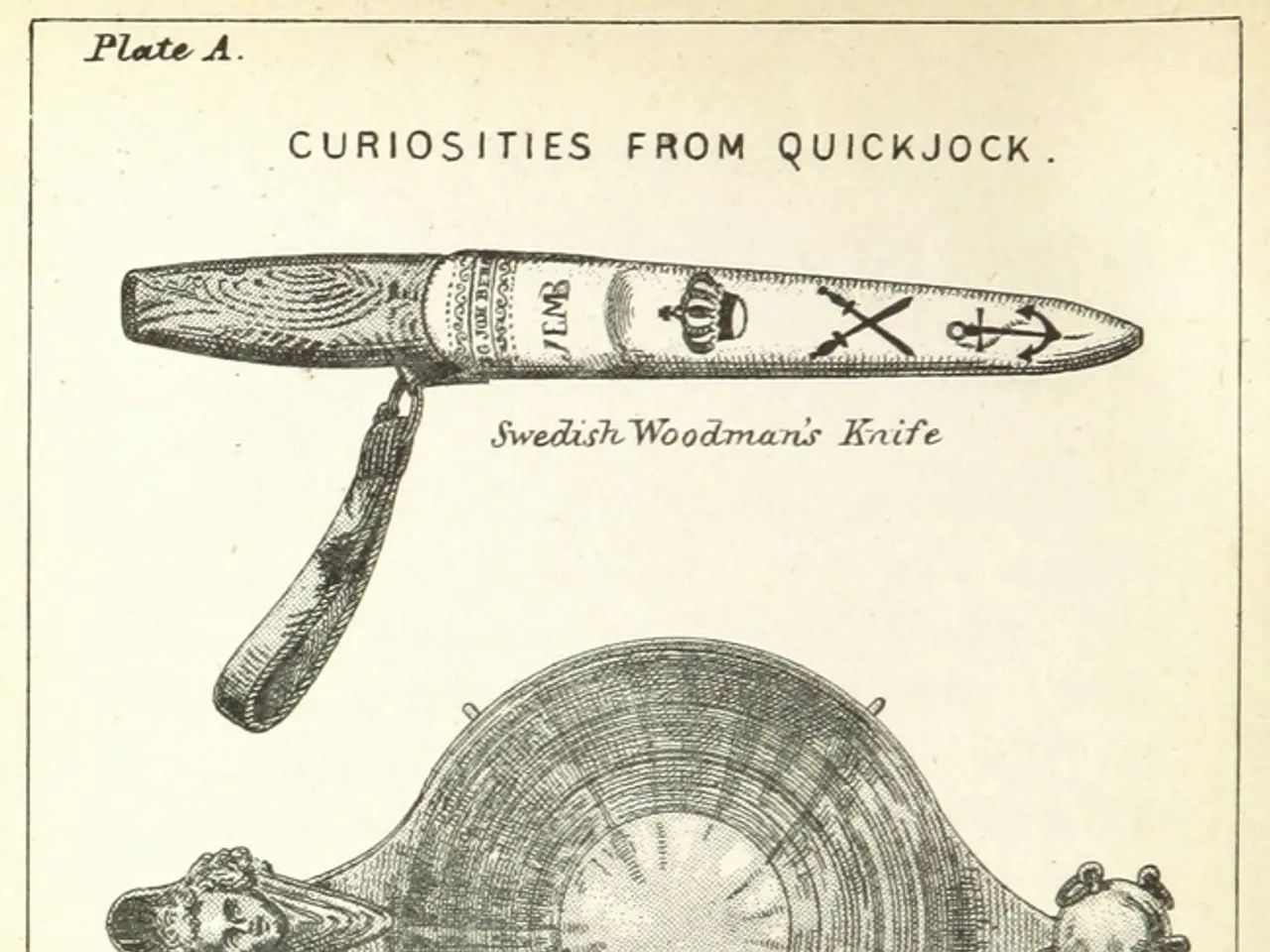Mastering Japanese Blades: A Step-by-Step Introduction to Sharp Precision!
A Comparative Study: Japanese vs. Western Knives
In the realm of culinary tools, the distinction between Japanese and Western knives is as significant as the ingredients themselves. These two types of knives differ in blade material, design, edge angle, weight, and intended use.
Blade Steel
Japanese knives, such as those made from VG-10 or SG2, are known for their hardness, which allows them to hold a sharper edge for longer periods. However, this hardness makes them more prone to chipping and brittleness compared to Western knives, which typically use softer stainless steels or high-carbon blends.
Edge Angle
Japanese knives boast a sharper edge angle, often around 12–16 degrees, enabling precise, clean cuts. In contrast, Western knives have a wider edge angle, typically 20–22 degrees, making the edge tougher and better suited to heavy-duty tasks.
Blade Thickness & Weight
Japanese knives tend to have thinner, lighter blades that facilitate precise slicing and push cutting. On the other hand, Western knives are generally heavier and thicker, designed for robustness and a rocking chopping style.
Bevel Style
Many traditional Japanese knives feature a single bevel, sharpened on one side, allowing extreme sharpness for specialized tasks. Western knives, however, are almost always double bevel, sharpened symmetrically on both sides for versatility and easier maintenance.
Balance & Handle Design
Japanese knives often have a lighter, blade-forward balance and handles shaped octagonal or D-style for comfort and precision. Western knives tend to have heavier, more handle-balanced designs suited for a rocking motion.
Use Cases
Japanese knives excel in tasks requiring finesse, such as slicing fish, vegetables, and delicate ingredients, reflecting their cultural emphasis on raw preparation (e.g., sushi). Western knives, on the other hand, are more suited to heavier chopping, dicing, and cutting through bone or tougher materials.
In summary, Japanese knives emphasize sharpness, precision, and specialized functions, while Western knives focus on durability, versatility, and heft for general-purpose kitchen tasks. The choice depends largely on cooking style and personal preference.
Common Types of Japanese Knives
Gyuto (Chef's Knife), Santoku, Nakiri, Deba, Yanagiba, and Petty Knife are some of the common types of Japanese knives, each serving a distinct purpose.
Caring for Japanese Knives
To maintain the quality of Japanese knives, it is essential to store them using a magnetic strip or knife sheath to prevent dulling or chipping. Always hand-wash and dry Japanese knives immediately after use, and avoid using glass or marble surfaces.
Choosing Your First Japanese Knife
If you're just starting out, a versatile knife like the Santoku or Gyuto is a good choice. Consider trying both wa-handles and yo-handles to find what feels best in your hand. Good entry-level Japanese knives start around $50-$100.
Sharpening and Maintenance
Use a whetstone for sharpening Japanese knives, and consider a honing rod for edge maintenance. Japanese knives prioritize precision and performance over durability and versatility compared to Western knives.
Elevating Your Cooking Experience
Whether you're slicing vegetables for a salad, crafting homemade sushi, or looking for a thoughtful gift for a fellow food lover, Japanese knives can elevate your cooking game. Just remember to treat them with care, and they will serve you well for years to come.
In the world of food-and-drink preparation, the adoption of Japanese knives can significantly elevate your cooking lifestyle by providing razor-sharp precision, as seen in the distinct purposes of common types like the Gyuto and Santoku. Maintaining the quality of your home-and-garden's new knives involves proper care, such as hand-washing, storing using a magnetic strip or knife sheath, and avoiding surfaces like glass or marble. By mastering the use of these kitchen tools, you can create extraordinary dishes and enhance your recipes with a touch of Japanese artistry.





